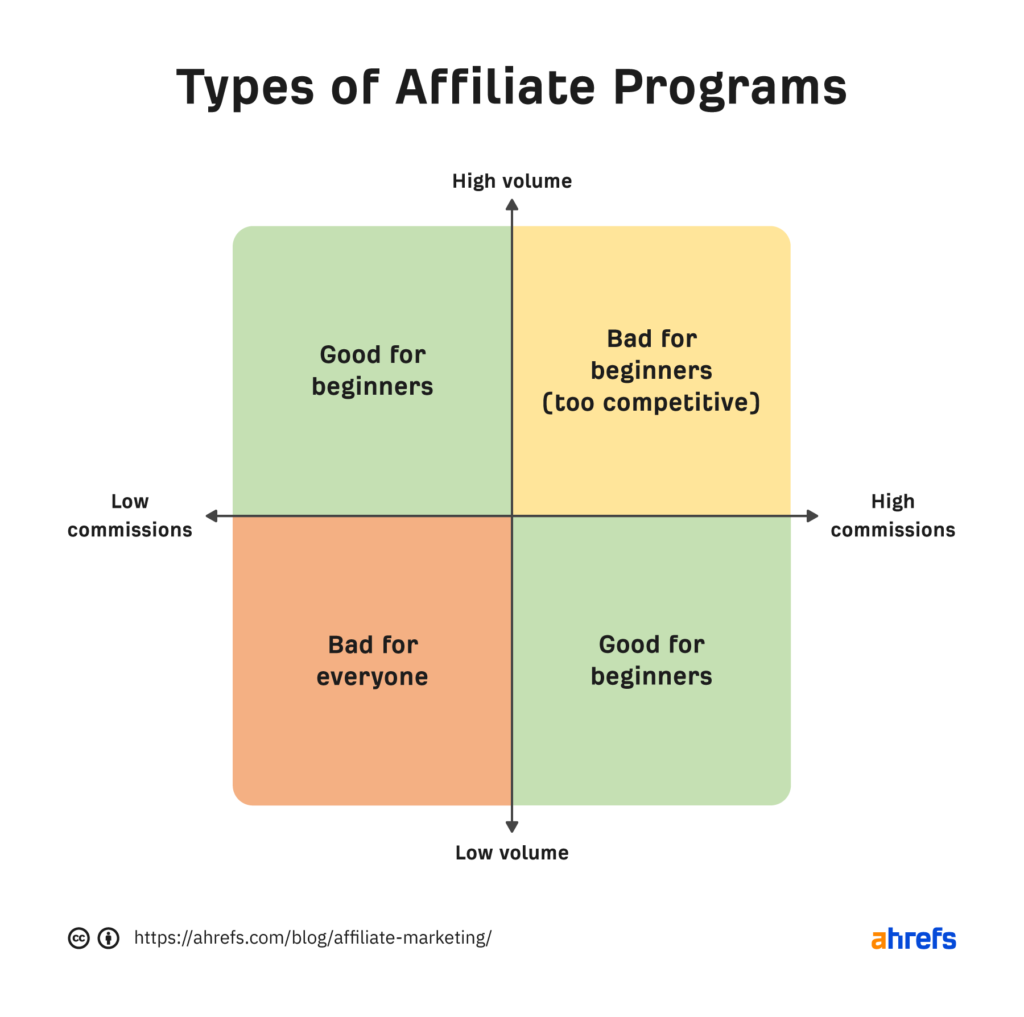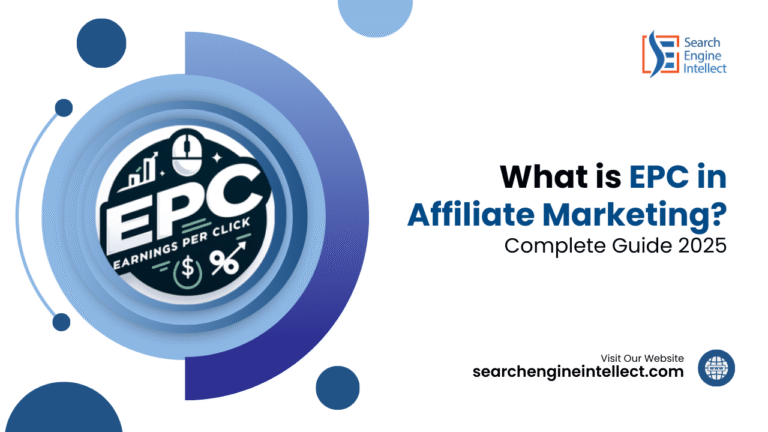Table of Contents
Book a Free Demo Class

Affiliate Marketing: What It Is and How to Get Started
Affiliate marketing has become a popular and lucrative way for individuals and businesses to earn money online. This comprehensive guide will explore what affiliate marketing is, how it works, and provide actionable steps to get started. Whether you’re a beginner or looking to enhance your existing affiliate marketing efforts, this article will equip you with the knowledge you need.
What is Affiliate Marketing?
Affiliate marketing is promoting another company’s product or service. You earn a commission when someone makes a purchase using your affiliate link. These commissions are typically a percentage of the purchase price or a set sum.
Key Components of Affiliate Marketing
- Affiliates: Individuals or businesses that promote products or services.
- Merchants: Companies or individuals that create and sell products or services.
- Consumers: Customers who purchase products through affiliate links.
Why should you do Affiliate Marketing?

Here are four reasons to consider affiliate marketing:
Low cost and low risk
Starting a business can be risky and expensive because it requires upfront investments in products, employees, equipment, rent, and so on. Affiliate marketing requires only a website. If it doesn’t work out, you’ve only invested some time and money.
Passive income potential
If you have a job, you need to work hours in return for income. If you’re doing affiliate marketing, you can earn an income as long as there’s traffic to your website and they’re buying via your affiliate links. This can happen at any time of the day, even when you’re sleeping.
Also read: What is Digital Marketing: Everything You Need to Know
Work at home or anywhere in the world
Earning passive money allows you to work at any time and from any location as long as you have access to the Internet and your affiliate website.
Easy to scale
A typical salesperson solely sells things from a single firm. As an affiliate marketer, you can promote products from a variety of firms while earning commissions from each of them.
How Does Affiliate Marketing Work?
When you join an affiliate program, you will obtain a unique link with a tracking ID. This allows the merchant to see if you’ve recommended customers to them.
When someone click on your link, a little file known as a cookie is stored on their device. This normally has an expiry date, so you get paid even if they put off buying for a while. For example, if you’re an Amazon affiliate:
The process of affiliate marketing involves several steps:
- Joining an Affiliate Program: Affiliates sign up for an affiliate program offered by a merchant.
- Receiving Unique Links: Once approved, affiliates receive unique tracking links to promote the merchant’s products.
- Promoting Products: Affiliates use various marketing channels (blogs, social media, email) to promote these products.
- Tracking Sales: When a consumer clicks on the affiliate link and makes a purchase, the transaction is tracked.
- Earning Commissions: The affiliate earns a commission based on the sale, which is usually a percentage of the product price.
Benefits of Affiliate Marketing

1. Low Start-Up Costs
Affiliate marketing requires minimal investment to get started. You don’t need to create your own products or manage inventory, making it accessible for beginners.
2. Passive Income Potential
Once your affiliate links are set up, you can earn money even while you sleep. This passive income potential is appealing for many marketers.
3. Flexibility and Independence
Affiliate marketing allows you to work from anywhere, set your own hours, and choose the products you want to promote.
4. Diverse Income Streams
You can promote multiple products from various merchants, creating diverse income streams and reducing reliance on a single source of revenue.
5. No Customer Support
As an affiliate, you don’t have to deal with customer service issues. The merchant handles all customer inquiries and support.
Also read: What Is the Role of SEO in Digital Marketing?
How to get started with Affiliate Marketing
Step 1: Choose Your Niche
Selecting a niche is crucial for your affiliate marketing success. Focus on a specific area that interests you and has a target audience. Consider the following factors:
- Passion: Choose a niche you are passionate about to maintain motivation.
- Market Demand: Research the demand for products in your chosen niche.
- Competition: Analyze the competition to find a balance between demand and saturation.
Step 2: Find Affiliate Programs

Once you have a niche, look for affiliate programs that align with your interests. Some popular affiliate networks include:
- Amazon Associates
- ClickBank
- CJ Affiliate
- ShareASale
- Rakuten Marketing
Step 3: Create Quality Content
Content is key to successful affiliate marketing. Create valuable, engaging, and informative content that resonates with your audience. Consider the following content types:
- Product Reviews: Write detailed reviews of products you promote.
- How-To Guides: Create guides that demonstrate how to use the products.
- Comparison Articles: Compare similar products to help consumers make informed decisions.
Step 4: Drive Traffic to Your Affiliate Links
To earn commissions, you need to drive traffic to your affiliate links. Here are some effective strategies:
- Search Engine Optimization (SEO): Optimize your content for search engines to attract organic traffic.
- Social Media Marketing: Share your content on social media platforms to reach a wider audience.
- Email Marketing: Build an email list and promote your affiliate products through newsletters.
Step 5: Track Your Performance
Use analytics tools to track the performance of your affiliate marketing efforts. Monitor key metrics such as:
- Click-Through Rate (CTR): The percentage of people who click on your affiliate links.
- Conversion Rate: The percentage of visitors who make a purchase through your links.
- Earnings Per Click (EPC): The average earnings generated per click on your affiliate links.
Common Mistakes to Avoid
- Choosing the Wrong Niche: Avoid selecting a niche solely based on profitability. Choose something you are genuinely interested in.
- Neglecting Content Quality: Focus on creating high-quality, valuable content rather than just promoting products.
- Ignoring SEO: Optimize your content for search engines to increase visibility and attract organic traffic.
- Not Disclosing Affiliate Links: Always disclose your affiliate relationships to maintain transparency and trust with your audience.
Affiliate Marketing Tools
Affiliate marketing tools are essential for anyone looking to succeed in the affiliate marketing landscape. These tools help streamline processes, track performance, and enhance marketing strategies. Here’s a detailed overview of some of the best affiliate marketing tools available, their functionalities, and how they can benefit your affiliate marketing efforts.
CJ Affiliate (Commission Junction)

Description: One of the largest affiliate marketing networks, CJ Affiliate connects affiliates with a wide range of merchants across various niches.
Benefits: Offers a user-friendly dashboard, real-time reporting, and a variety of promotional tools to help affiliates maximize their earnings.
Google Analytics

Description: A powerful web analytics tool that provides insights into website traffic and user behavior.
Benefits: Helps affiliates track performance metrics, understand audience demographics, and optimize their marketing strategies based on data.
MailChimp

Description: An email marketing platform that allows users to create and manage email campaigns.
Benefits: Ideal for nurturing leads and keeping affiliates engaged through targeted email marketing campaigns.
Also read: Creating an E-commerce Website: Must-Have Plugins and Themes for Beginners
Ahrefs

Description: An SEO tool that provides insights into keyword research, backlink analysis, and competitor research.
Benefits: Helps affiliates improve their SEO strategies, identify high-value keywords, and analyze competitors’ performance.
Pretty Links

Description: A WordPress plugin that shortens and manages affiliate links.
Benefits: Makes it easier to track clicks on affiliate links and create cleaner, more user-friendly URLs.
Voluum

Description: A tracking and analytics tool for managing affiliate campaigns.
Benefits: Provides real-time tracking of clicks, conversions, and revenue, allowing affiliates to optimize their campaigns effectively.
Flippa

Description: An online marketplace for buying and selling websites and domains.
Benefits: Affiliates can purchase existing affiliate sites to jumpstart their efforts or sell their own sites when they want to move on.
Canva

Description: A graphic design tool that allows users to create visually appealing graphics and marketing materials.
Benefits: Helps affiliates create eye-catching visuals for their content and social media promotions.
Buffer

Description: A social media management tool that allows users to schedule posts across multiple platforms.
Benefits: Helps affiliates maintain a consistent social media presence and engage with their audience effectively.
GetResponse

Description: An all-in-one marketing platform that includes email marketing, landing pages, and automation tools.
Benefits: Enables affiliates to create effective marketing campaigns and manage their leads efficiently.
Choosing the Right Tools
When selecting affiliate marketing tools, consider the following factors:
Support: Ensure the tools provide adequate support, whether through live chat, forums, or resource pages.
Ease of Use: Look for user-friendly tools that do not require extensive technical knowledge.
Pricing: Evaluate the cost-effectiveness of the tools. Many offer free trials or free versions.
Conclusion
Affiliate marketing is an excellent way to earn passive income online. By understanding what affiliate marketing is, how it works, and following the steps outlined in this guide, you can successfully start your affiliate marketing journey. With dedication and the right strategies, you can build a sustainable income stream and achieve your financial goals.







